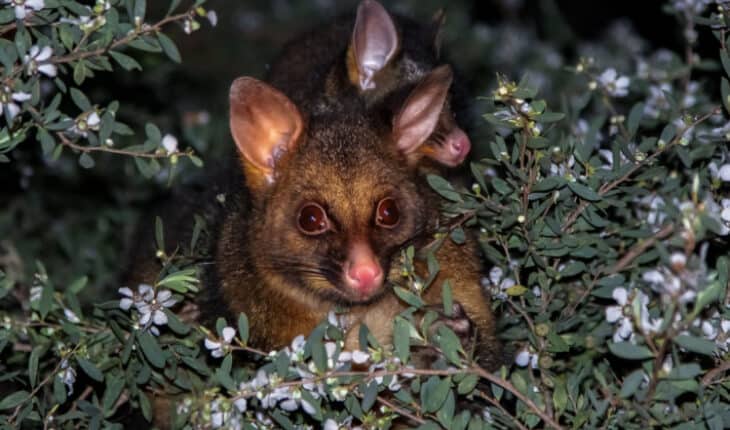Innovative tool predicts Buruli ulcer outbreaks in Victoria, Australia. Researchers have developed a surveillance system capable of detecting elevated risks of Buruli ulcer outbreaks in Victoria thanks to possum ‘poo’ – a breakthrough in the fight against the disease.
Once considered an exotic bacterial infection, Buruli ulcer has become an important public health problem in Victoria, with the state now considered one of the most endemic areas for the disease globally.
Over the past five years, Beating Buruli ulcer in Victoria, a world-first, collaborative research project led by University of Melbourne Professor Tim Stinear, Director of the WHO Collaborating Centre for Mycobacterium ulcerans at the Peter Doherty Institute for Infection and Immunity (Doherty Institute), has made significant progress in understanding how the disease is transmitted and what can be done to prevent infections from the flesh-eating bacteria.
In addition to confirming the role Australian native possums play in human outbreaks of Buruli ulcer, a recent study published in eLife described a ground-breaking surveillance tool created by the Beating Buruli ulcer in Victoria research team with the potential to control the disease.
Comparing data from possum ‘poo’ analysis to epidemiological data over time, researchers identified a significant spatial correlation between clusters of M. ulcerans positive possum excreta and clusters of human Buruli ulcer cases.
“Our data showed that outbreaks of Buruli ulcer coincided with a high number of possums carrying the bacteria. While it is something we’ve been suspecting for a while, this finding categorically confirms the important role of Australian native possums in the transmission of the bacterium to humans,” Professor Stinear said.
Following this significant finding and using the possum ‘poo’ data, the team developed the first-ever computer modelling program capable of predicting locations and times of increased Buruli ulcer transmission risk in Victoria.
Professor Nick Golding is an infectious disease modeller at Curtin University, with a focus on mathematical and statistical modelling, ecology, and public health.
“We developed a mathematical model that uses the GPS coordinates of where we have detected the M. ulcerans bacteria in possum excreta, and identifies the households that are most likely to be at risk from Buruli ulcer in the coming months,“ Professor Golding explained.
The surveillance system represents major progress towards the control and elimination of Buruli ulcer in southeast Australia.
“This sophisticated early warning system could play a significant role in preventing cases of Buruli ulcer in Victoria by alerting the public and local healthcare providers to the increased risk of infection,” Professor Stinear said.
“The Victorian Department of Health is a key collaborator in this project and, together, we are discussing how they can use this program to inform the design and delivery of targeted public health interventions to prevent human cases.”
The Beating Buruli ulcer in Victoria research project is led by the Peter Doherty Institute for Infection and Immunity (Doherty Institute) and is a collaboration with several organisations, including (but not limited to) the Victorian Department of Health, CSIRO, Australia’s national science agency, Mornington Peninsula Shire Council, Telethon Institute at the Curtin University, and Austin Health.
Peer review: eLife https://doi.org/10.7554/eLife.84983
Funding: This research was funded by the National Health and Medical Research Council (NHMRC) and the Victorian Department of Health
- New lipid-based pathway discovered as key to memory formation - 25th June 2025
- Crucial link could explain how Alzheimer’s takes hold - 25th June 2025
- Understanding Your Mind Can Improve Daily Life - 25th June 2025






